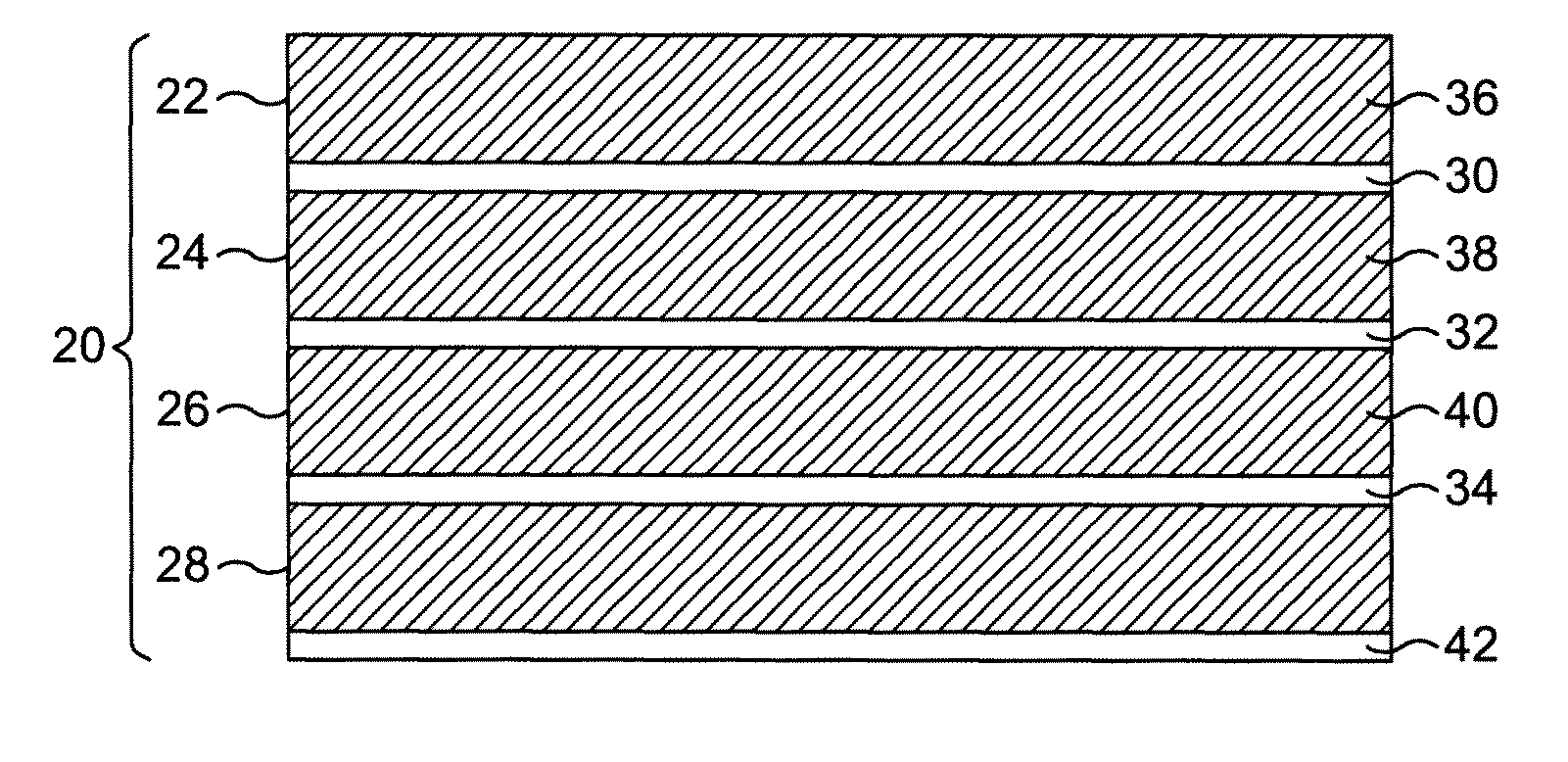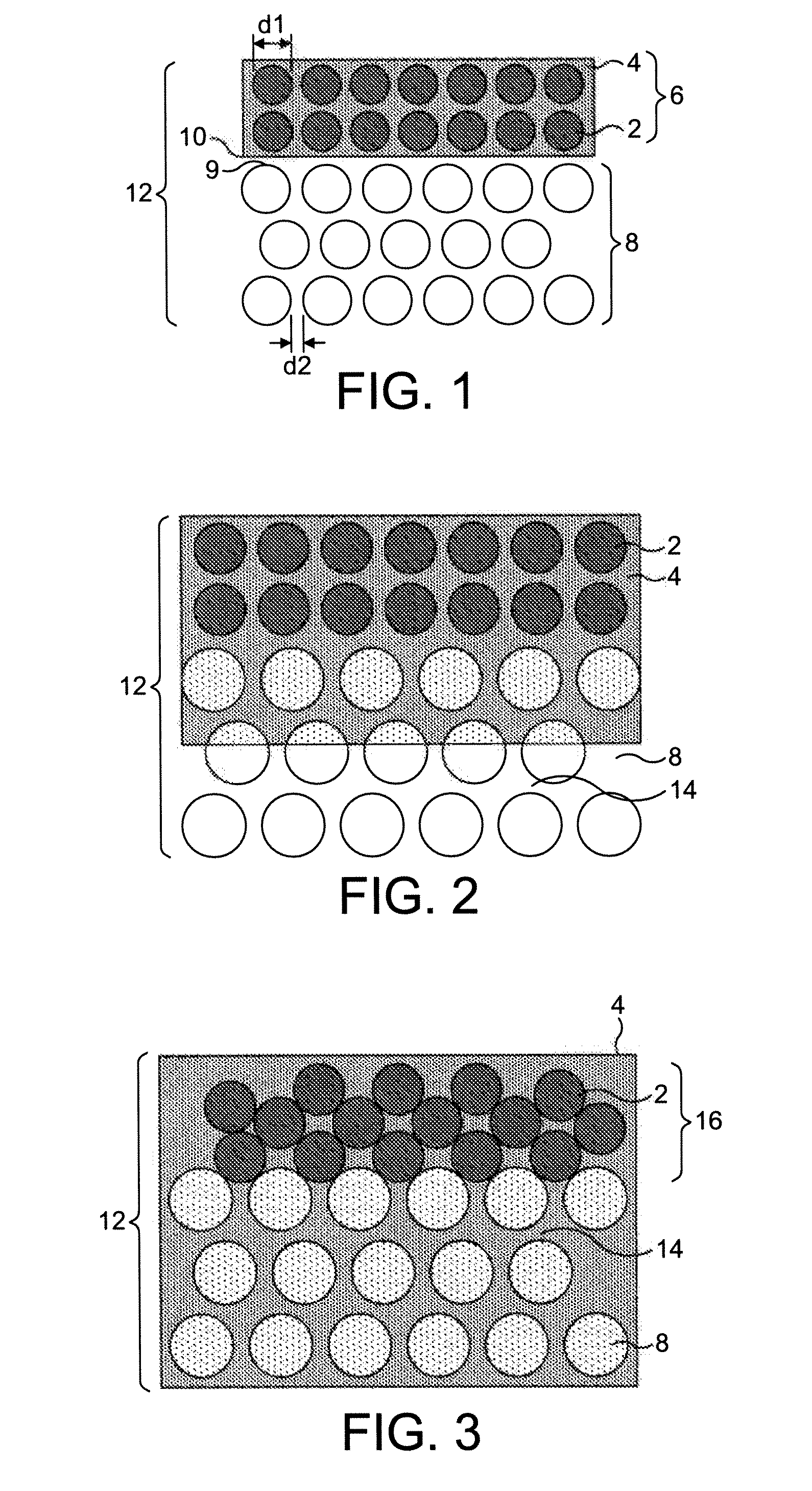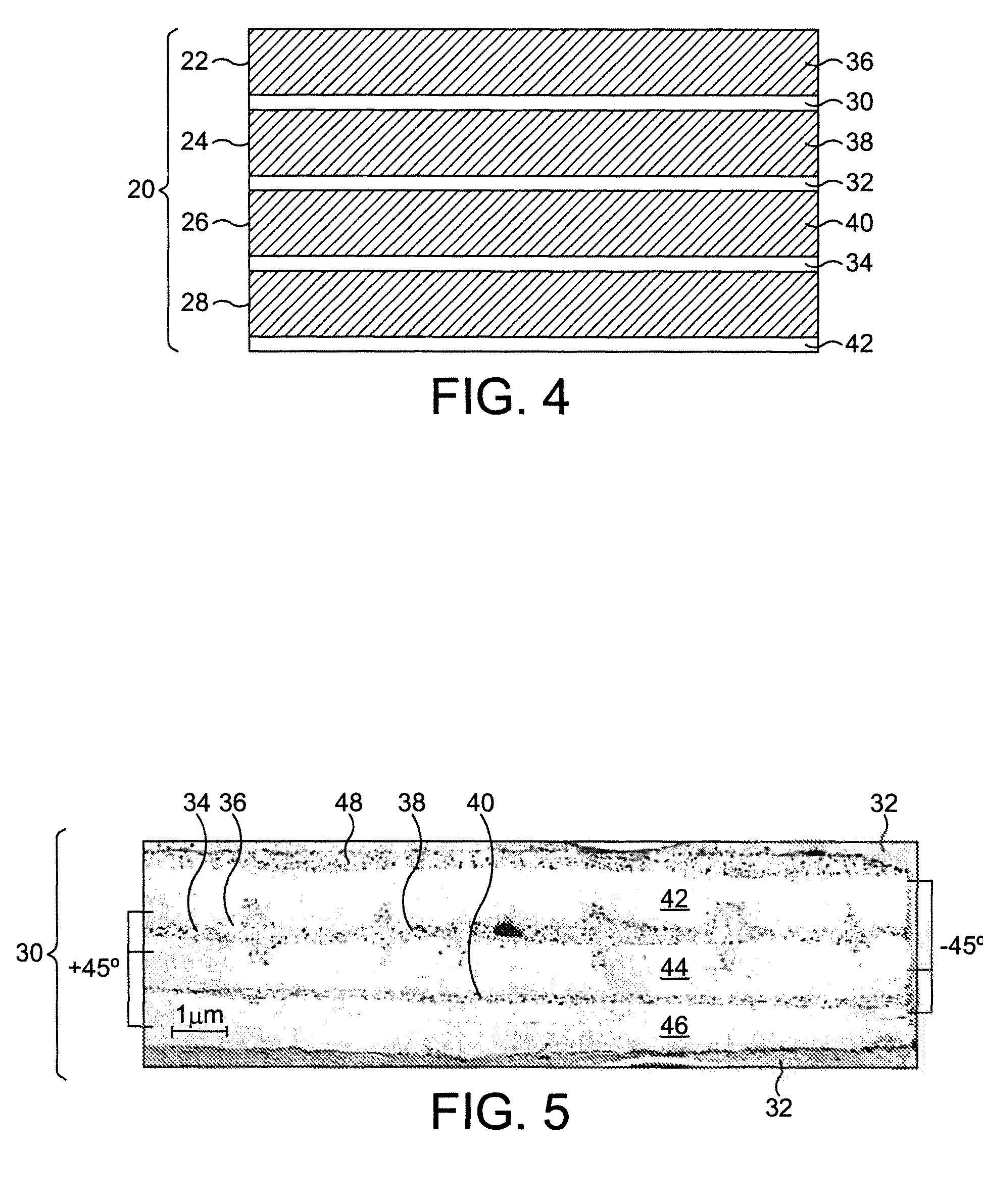Fibre-reinforced composite material and manufacture thereof
a composite material and fibre reinforcement technology, applied in the field of fibre reinforcement composite materials, can solve the problems of general reduction of thermal and mechanical properties, and achieve the effects of reducing the volume ratio of fibres, high strength and stiffness, and high toughness
- Summary
- Abstract
- Description
- Claims
- Application Information
AI Technical Summary
Benefits of technology
Problems solved by technology
Method used
Image
Examples
example 1
[0062]Following laboratory-based formulation and development work, and preliminary fire tests, large scale laminates were manufactured embodying the present invention. In these laminates, the volume fraction Vf was 46.6% and the fibre diameter was 6 microns. The filler used in the example was a fire retardant sold by Albermarl Corporation under the trade mark Martinal, and under the product names OL-104 / LE, and the filler particle size was estimated to be approximately 3.3 microns.
[0063]The epoxy resin used was the resin sold by Gurit (UK) Limited under the trade name ST70FR including the fire-retardant filler particles identified above. These laminate samples were tested for thermal and mechanical performance (glass transition temperature and inter-lamina shear strength respectively), and the results compared to a control sample of ST70 which employed the same epoxy base resin system without fire-retardant filler. Panels were also tested in accordance to the fire test of British St...
PUM
| Property | Measurement | Unit |
|---|---|---|
| volume fraction | aaaaa | aaaaa |
| volume fraction | aaaaa | aaaaa |
| size | aaaaa | aaaaa |
Abstract
Description
Claims
Application Information
 Login to View More
Login to View More - R&D
- Intellectual Property
- Life Sciences
- Materials
- Tech Scout
- Unparalleled Data Quality
- Higher Quality Content
- 60% Fewer Hallucinations
Browse by: Latest US Patents, China's latest patents, Technical Efficacy Thesaurus, Application Domain, Technology Topic, Popular Technical Reports.
© 2025 PatSnap. All rights reserved.Legal|Privacy policy|Modern Slavery Act Transparency Statement|Sitemap|About US| Contact US: help@patsnap.com



